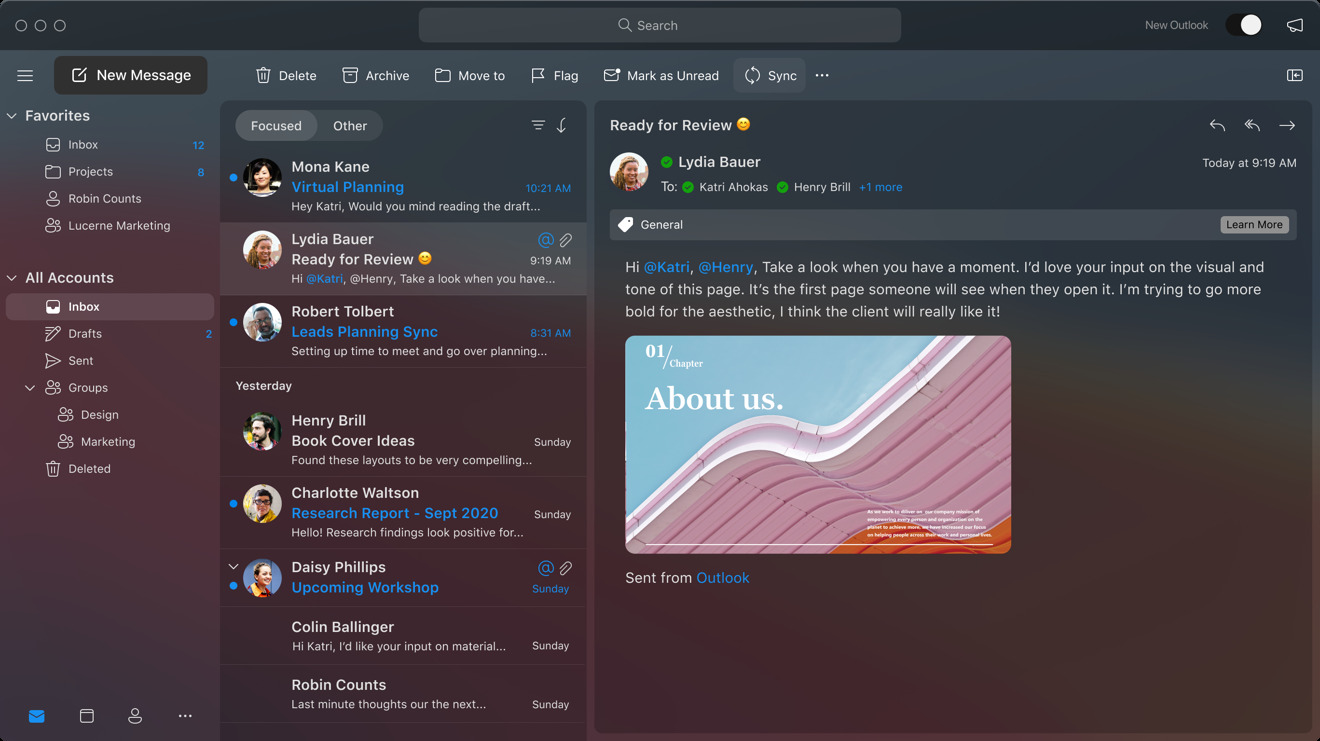

- #Outlook 15 for mac high cpu usage archive#
- #Outlook 15 for mac high cpu usage software#
- #Outlook 15 for mac high cpu usage windows#
I recommend going back and purging anything you know you don’t need or you’ll never access again. One solution to this is to start deleting emails you no longer need. Any program that needs to access gigabytes of data every time it starts up is going to slow down over time. If you’re getting hundreds of emails per day, your archives can quickly add up to gigabytes. They’re usually just text, so they only run a few kilobytes each without attachments. The problem is, those emails still exist. You can keep an inbox clean by archiving messages you don’t need or filing them away in folders for later reference, and that’s fine.
#Outlook 15 for mac high cpu usage archive#
I would venture to say that no one but the most OCD about Inbox Zero uses the delete button rather than the archive button. Delete Delete Delete!Įvery single one of us is guilty of saving some emails we don’t need. Assuming Mac Mail is the culprit for a slow machine, or even just performing slow itself, here are some actions you can take to speed it up. It’s always worthwhile to maintain virus protection.Īnyways, all of that is outside the scope of this post.
#Outlook 15 for mac high cpu usage windows#
Despite all of that, Apple devices are susceptible to viruses just as much as Windows PCs are, though they may not be the same viruses across all platforms. Some argued that it was inherent to the platform, others credit Apple with building robust security, and some claim it’s simply due to the smaller audience – making Apple computers a less valuable target for virus authors. For decades, Macs had a reputation for being a secure platform. Viruses are a common problem among Apple users. Other issues you might look at include checking to see if your hard drive is filling up, checking to make sure your RAM is functional and sufficient to run your desired apps, and checking for viruses. They just won’t solve your problem completely. If it doesn’t look like Apple Mail is the culprit, you can still put these tips to use. If not, you might have another problem, in which case the tweaks I’ll mention won’t help you immediately. Chances are, Mail is eating up a bunch of system resources. Monitor the various apps you’re running as you load up Mail. Hit Command-Space and type in Activity Monitor in the launch window.
#Outlook 15 for mac high cpu usage software#
Sometimes there are other problems, anything from hardware issues to software memory leaks eating up system resources. To find out the reason for high CPU usage in your case, note the process name and refer to Microsoft Support or third-party resources for more information.The first thing you should do is check to make sure the reason your computer is acting slow is because of Mac Mail. Downloading and installing Windows updates.If you find that this process belongs to Windows OS, please note that the following system actions cause high CPU usage: For some types of software, like video or photo editing, CAD, or video games, high CPU usage is a common operating condition. Once you've determined what Windows process consumes a large amount of CPU resources, you may refer to the software manufacturer's knowledge base to find more information. If you notice that your virtual machine consumes a high amount of CPU resources, check CPU consumption in the guest operating system in Task Manager (right-click on Windows taskbar > Task Manager): The virtual machine's CPU consumption directly depends on guest operating system usage. If Windows still works slowly, check Task Manager as described below to find out the reason for CPU consumption. From our side, we recommend you give Windows some time to finish doing the necessary internal jobs and other required maintenance tasks.

Users who use their virtual machines rarely may encounter slowness and other performance issues after starting a virtual machine if it wasn't used for a long time. Assigning a higher value may cause performance degradation of both Mac and the virtual machine. Note: we strongly advise using the recommended number of CPUs. To check how many CPU units are assigned to VM open configuration window > Hardware > CPU & Memory. For example, if your virtual machine has 4 CPU units assigned, then a total amount of CPU utilization by a VM will be 400%. The maximum utilization of every CPU unit assigned to a virtual machine in Activity Monitor counts as 100%. High CPU usage by virtual machine's operating system.


 0 kommentar(er)
0 kommentar(er)
